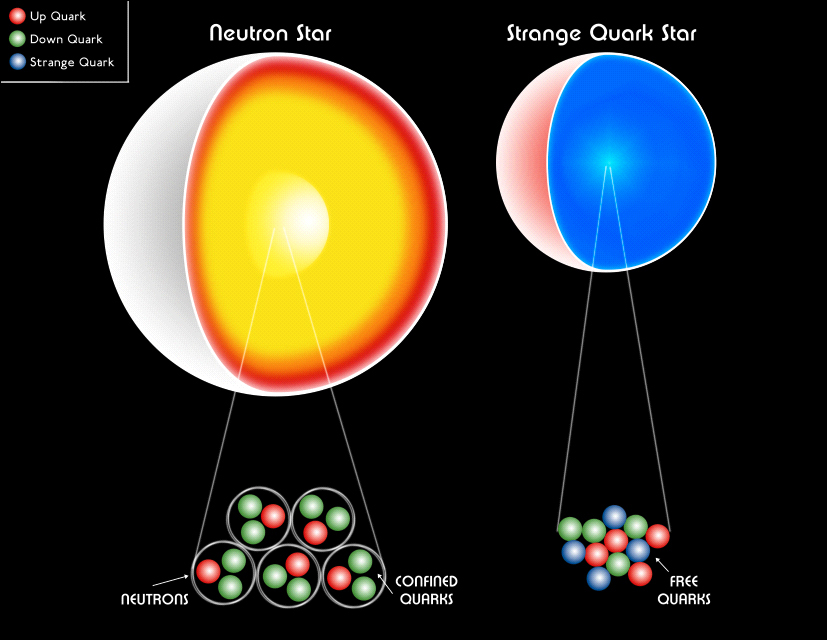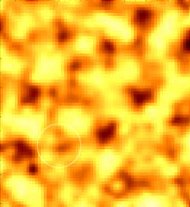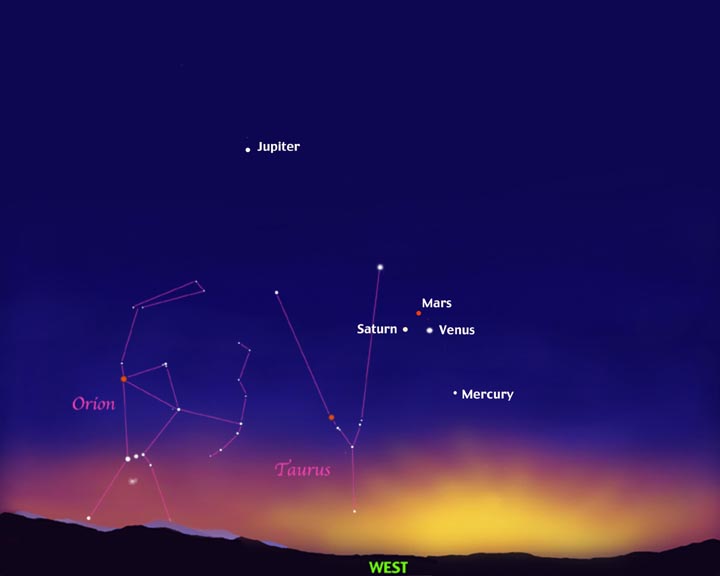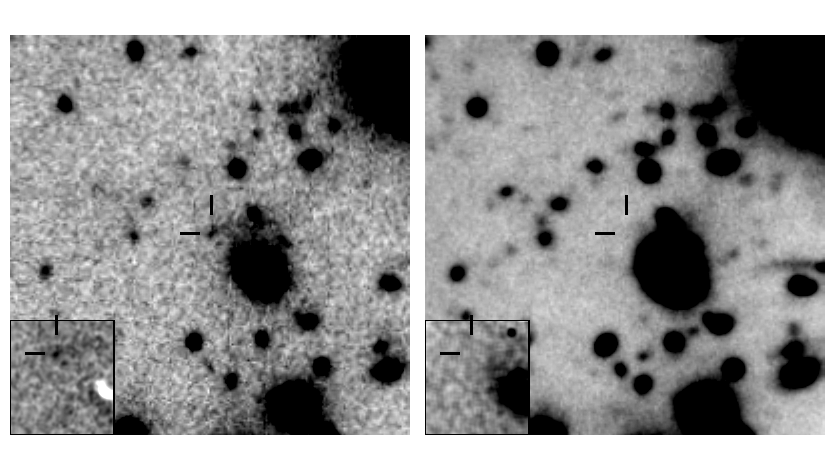Semester 1, 2002 |  RSS (Subscribe) RSS (Subscribe) |
7th June, 2002: The Hunting of the Quark
Astronomers believe they have found their first quark stars - super-dense objects that are formed when the remnants of old stars collapse in on themselves. Theorists have long suspected the existence of these weird objects, which are denser than neutron stars but are not compact enough to become black holes. Observations by Chandra X-ray observatory of RXJ1856.5-3754 and 3C58 suggest they are composed of pure quarks (building blocks of protons, neutrons, etc).
"Taken at face value, the combined observational evidence points to a star composed not of neutrons, but of quarks in a form know as strange quark matter" said Jeremy Drake of the Harvard-Smithsonian Center for Astrophysics (CfA) in Cambridge, Mass., and lead author of a paper on RXJ1856 to appear in June 20, 2002 issue of The Astrophysical Journal.
Some scientists insist that other ways exist to explain the X-ray data. Patrick Slane, an astrophysicist who works down the hall from Drake, points out that x-rays ... may come from a hot spot on an ordinary neutron star. Instead of originating from a small strange quark star, the energetic rays may emanate from a hot area on the surface of a neutron star.
Drake admits to that possibility, but says the probability is not too likely. Neutron stars rotate rapidly, so that a hot spot on a larger star would generate pulsations in the x-ray signal. No such pulsations have been observed.
In the midst of the word he was trying to say,
In the midst of his laughter and glee,
He had softly and suddenly vanished away-
For the Quark* was a Boojum, you see.
*Apologies to Lewis Caroll

For more information see: Chandra Press Release * Harvard Gazette
30th May, 2002: Relic of the Early Universe
Just when you thought you'd heard everything you wanted to know about the Cosmic Background Radiation along comes another experiment! The Cosmic Background Imager (CBI) is a special-purpose radio telescope designed to study the cosmic microwave background radiation from the early universe. It is located at an altitude of 5080 m (16,700 feet) in the Chilean Andes.
The CBI detects radiation on the surface of "last scattering," where photons were emitted about 14 billion years ago when the Universe first became transparent to radiation. The CBI detected features correspond to small density enhancements of the hot primordial plasma. As the Universe expands, the gravity of the dark matter within these clumps will make them collapse into clusters of galaxies.
CBI team leader Anthony Readhead of Caltech says "These unique high-resolution observations provide a new set of critical tests of cosmology, and provide new and independent evidence that the universe is flat and is dominated by dark matter and dark energy."

For more information see: Caltech CBI Press Release * NSF Press Release * ABC Space News
14th May, 2002: Old Stars Age-date the Universe
An international team of astronomers, including Swinburnes own Brad Gibson, has announced a new age range for old, white dwarf stars, and further provide an age determination of the Universe. The study used data from HST on white dwarf stars in the globular cluster Messier 4. The team has identified the oldest white dwarfs in one of the oldest of the Galaxy's clusters.
Professor Brad Gibson of Swinburne's Centre for Astrophysics & Supercomputing says, "We have been looking at the oldest and faintest white dwarfs (burnt out stars) in our Milky Way. A bit like a pathologist measuring body temperature to determine time of death, we can use the temperature of a burnt-out star to work out the star's age."
These dim white dwarf stars are 12 to 13 billion years old, giving a lower limit to the age of the Universe of 13 billion years.

For more information see: Swinburne Media Release * STScI News
25th April, 2002: Planetary Hi-Jinx
Hold onto your seismometers, dig your shelter, cash those stocks and bonds and dare I say, study your horoscope! On the 5th of May, 2002 a major planetary alignment will occur. (Actually the last two weeks of April and the first two weeks of May present a once-in-a-lifetime opportunity!) Mercury, Venus, Mars and Saturn will congregate in the constellation Taurus. Jupiter will be nearby in Gemini, just one constellation away. Sounds more like a great night-sky spectacular to me!

For more information see: Harvard-Smithsonian CfA * NASA Headlines * John Mosley, Griffith Observatory (2000 alignment)* Bad Astronomy - Alignments
3rd April, 2002: Comet Ikeya-Zhang
Comet Ikeya-Zhang has become bright enough to stand out in the night sky. Discovered February 1, the comet has rounded the Sun. Many observers report a current brightness approaching third magnitude. The comet is actually a giant snowball created during the formation of our Solar System. Comet Ikeya-Zhang has probably been to the inner Solar System at least once before in 1661.
In 1950, Fred Whipple presented his "dirty snowball" model of comets. This model is now recognised as fundamentally correct and in 1999, at age of 92, he joined the Contour programme research team, Cornell Univ. Press Release. Judging by Freds numerous activities, he will also be involved in studying the next passage of Comet Halley!

For more information see: CNN Space News * Astronomy Picture of the Day * Comet C/2002 C1 Ikeya-Zhang
21st March, 2002: Baby Galaxies
It's baby time*. Esther Hu and collaborators from the University of Hawaii have detected the furthest (and youngest) galaxy yet. For those of you who monitor redshifts, it is a z=6.56 object. (It's not a quasar either, but a young galaxy rapidly forming stars.) Alternatively, adopting a reasonable cosmological model suggests an age of about 1 Gyr, or a lookback time of approximately 13 Gyr for a 14 Gyr old universe. One of the remarkable aspects is that we are seeing a galaxy very close to earliest limit (about 300,000 years after the Big Bang) of when matter could exist in the Universe.
* SAO also celebrates the birth of Tilda Frances Gibson, on the 19 March, 2002, daughter of Kristine Hensel and Brad Gibson (SAO Instructor and Developer). redshift z=0.0 and rising.

For more information see: CNN Space News * Galaxies from the Dark Ages
12th March, 2002: New Pulsar Ages from Space Motions
A recent determination of a pulsars age by measuring its motion with respect to its host supernovae remnant over a number of years has prompted astronomers to re-think pulsar ages. The observations using the VLA revealed a much younger age (64,000 years) than previously assumed by the more "standard" method of spin-rate slowdown (107,000 years). A member of the investigative team is SAO's own instructor, Bryan Gaensler, of the Harvard-Smithsonian Center for Astrophysics in Cambridge, MA. The research is reported in the March 10 edition of the Astrophysical Journal Letters.

For more information see: NRAO Press Release
6th March, 2002: The Search for H2O on Mars
The Mars Odyssey spacecraft is already returning important information about the geological make-up of the surface of Mars. Observations by the gamma-ray spectrometer suggests large amounts of hydrogen exists in extended regions across the planet. It is not yet clear though that this hydrogen is directly related to water ice.

For more information see: CNN Space News * Space News ABC * NASA Mars Odyssey
1st March, 2002: Return to Hubble
The shuttle Columbia is now scheduled to launch at 6:22AM (US) EST on 1st March on its return mission to Hubble Space Telescope. One of the main aims of the mission will be to install the Advanced Camera for Surveys (ACS).
ASC is sensitive to wavelengths ranging from visible to far ultraviolet. It is actually a team of three different cameras with specialized capabilities. The high resolution camera will take extremely detailed pictures of the inner regions of galaxies and search neighbouring stars for planets and proto-planets. The solar blind camera blocks visible light to enhance ultraviolet sensitivity. Among other things, it will be used to study weather on planets in our own solar system. With a field of view twice the size of Hubble's current surveyor, ACS's wide field camera will conduct new surveys of the Universe.

For more information see: CNN Space News * NASA Servicing Mission 3B Online * Hubble Project (GSFC) Servicing Missions






